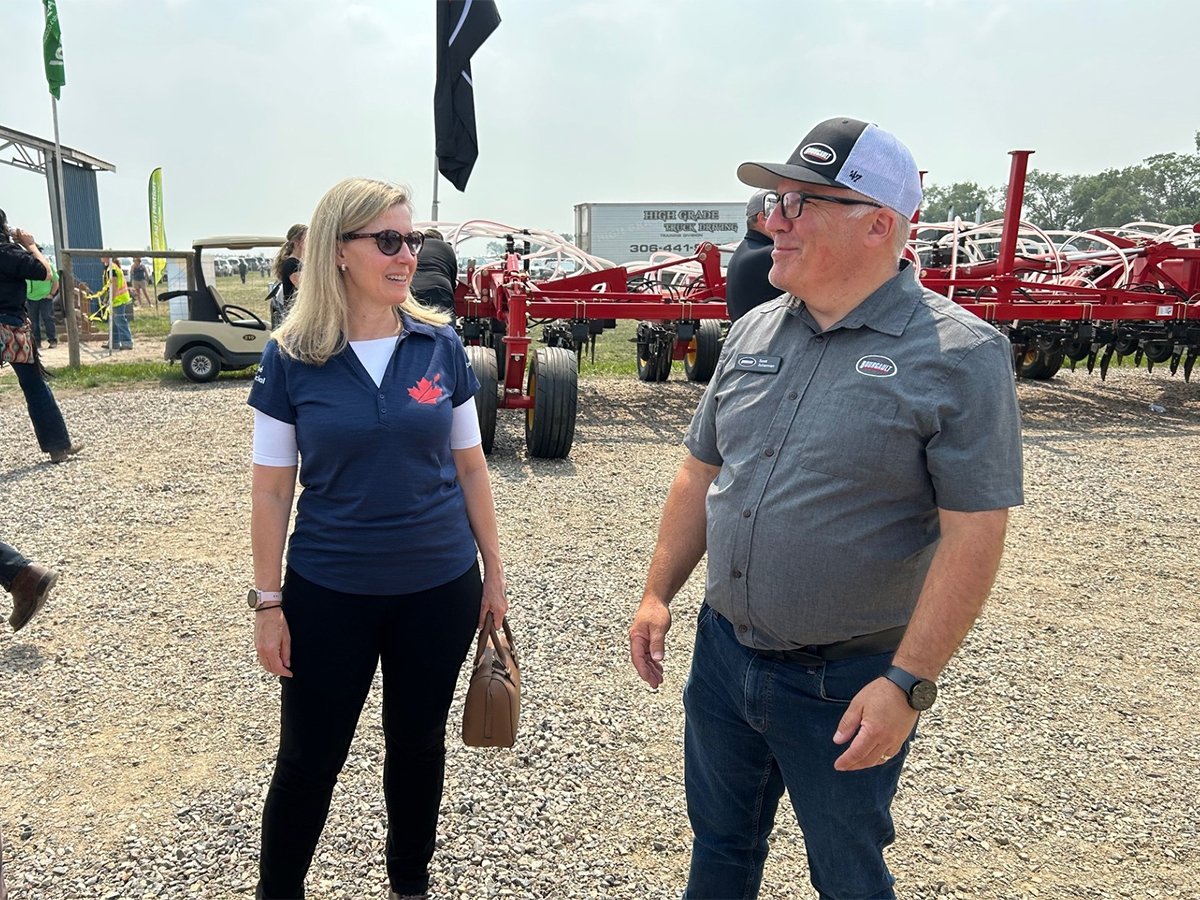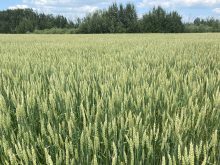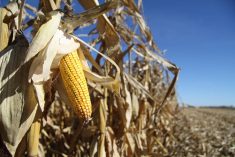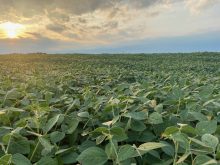Prices dropped 15 percent from the highest point in January to the low in summer, but it’s not as bad as most years
Feedlot and cow-calf margins are slipping downward as the beef market heads toward the end of the year.
From the highest point in January to the low in summer, fed cattle prices dropped 15 percent, said Canfax analyst Dallas Rodger at the Alberta Beef Producers annual meeting in Calgary held Dec. 3-5.
“In the last couple years, we have seen the fed cattle market drop anywhere from 28 to 31 percent. In those prior two years, those ranked as number one and number three as the biggest declines we have seen over the past 25 years,” he said.
Read Also

Outdoor farm show a trade supercharger
Canadian Chief Trade Commissioner Sara Wilshaw says international buyers love the chance to see farm equipment in the field in Saskatchewan.
This year, prices for finished cattle stayed $10 above the lows of 2016 and 2017. In addition, Alberta prices were stronger than Ontario or the United States but that spread has changed in the last five weeks.
Cattle movement trends have also shifted.
The most recent Statistics Canada figures show that at the end of September, 105,000 U.S. feeder calves had entered southern Alberta feedlots, pushing imports up 197 percent over the previous year. It’s estimated that about 175,000 head might come to Canada by the end of the year.
About 21,000 U.S. beef and dairy calves entered in September. The dairy feeders weighed 300 to 400 pounds upon arrival and could be on feed for some time to achieve market weight. The value of dairy animals has dropped in the U.S. so more could end up in Canada.
Canadian feeders are also going south. So far, 180,000 have been exported but that trend could soften.
“There’s been lots of questions around if we can keep pace with the export side of things. Remember the U.S. cattle feeder has also been losing money so it is tough to see a big spike in exports for the first quarter,” Rodger said.
Feedlots in Canada are losing money and that trend is not expected to change for some time. The break-even on yearlings coming off grass was $165 to $168 per hundredweight.
“We are a couple weeks away from seeing these early grass cattle hit the fed cattle market and trading at the low $150s. We have a ways to go before we come anywhere close to break-evens on these cattle,” he said.
Calves being bought today are likely to lose money when they are sold next summer. The dairy calves should hit the finished market next year and that could also have some impacts.
Some of the red ink is washed away with exports to the U.S.
“We have heard a recent uptick in fed cattle being exported to the U.S. on basis contracts and that has been pretty lucrative for some guys,” he said.
More cattle are also going on feed. The November cattle-on-feed placements report was the highest level since 2008.
Lightweight placements for the third quarter were up 73 percent because of early movement of cattle coming off depleted grass and dairy calves heading to the feedlots.
Packers are profitable but they may start discounting heavyweight cattle showing up in recent months.
Carcasses peaked at 934 lb. but rolled back to 916 lb. recently.
“When we start losing money, we tend to grow cattle bigger and if fed prices don’t pick up, we could see guys try to outfeed the market. We might not see much moderation in carcass weights,” he said.


















